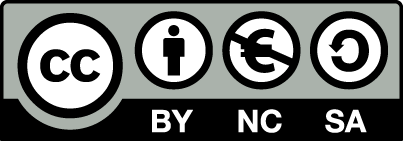Please use this identifier to cite or link to this item:
https://hdl.handle.net/2445/118862Full metadata record
| DC Field | Value | Language |
|---|---|---|
| dc.contributor.author | Soto del Cerro, David | - |
| dc.contributor.author | Coombs, Ian D. | - |
| dc.contributor.author | Gratacòs i Batlle, Esther | - |
| dc.contributor.author | Farrant, Mark | - |
| dc.contributor.author | Cull-Candy, Stuart G. | - |
| dc.date.accessioned | 2018-01-04T14:43:29Z | - |
| dc.date.available | 2018-01-04T14:43:29Z | - |
| dc.date.issued | 2014-08-27 | - |
| dc.identifier.issn | 0270-6474 | - |
| dc.identifier.uri | https://hdl.handle.net/2445/118862 | - |
| dc.description.abstract | Many properties of fast synaptic transmission in the brain are influenced by transmembrane AMPAR regulatory proteins (TARPs) that modulate the pharmacology and gating of AMPA-type glutamate receptors (AMPARs). Although much is known about TARP influence on AMPAR pharmacology and kinetics through their modulation of the extracellular ligand-binding domain (LBD), less is known about their regulation of the ion channel region. TARP-induced modifications in AMPAR channel behavior include increased single-channel conductance and weakened block of calcium-permeable AMPARs (CP-AMPARs) by endogenous intracellular polyamines. To investigate how TARPs modify ion flux and channel block, we examined the action of γ-2 (stargazin) on GluA1 and GluA4 CP-AMPARs. First, we compared the permeation of organic cations of different sizes. We found that γ-2 increased the permeability of several cations but not the estimated AMPAR pore size, suggesting that TARP-induced relief of polyamine block does not reflect altered pore diameter. Second, to determine whether residues in the TARP intracellular C-tail regulate polyamine block and channel conductance, we examined various γ-2 C-tail mutants. We identified the membrane proximal region of the C terminus as crucial for full TARP-attenuation of polyamine block, whereas complete deletion of the C-tail markedly enhanced the TARP-induced increase in channel conductance; thus, the TARP C-tail influences ion permeation. Third, we identified a site in the pore-lining region of the AMPAR, close to its Q/R site, that is crucial in determining the TARP-induced changes in single-channel conductance. This conserved residue represents a site of TARP action, independent of the AMPAR LBD. | - |
| dc.format.extent | 11 p. | - |
| dc.format.mimetype | application/pdf | - |
| dc.language.iso | eng | - |
| dc.publisher | The Society for Neuroscience | - |
| dc.relation.isformatof | Reproducció del document publicat a: https://doi.org/10.1523/JNEUROSCI.0383-14.2014 | - |
| dc.relation.ispartof | Journal of Neuroscience, 2014, vol. 34, num. 35, p. 11673-11683 | - |
| dc.relation.uri | https://doi.org/10.1523/JNEUROSCI.0383-14.2014 | - |
| dc.rights | cc-by-nc-sa (c) Soto del Cerro, David et al., 2014 | - |
| dc.rights.uri | http://creativecommons.org/licenses/by-nc-sa/3.0/es | - |
| dc.source | Articles publicats en revistes (Biomedicina) | - |
| dc.subject.classification | Biologia molecular | - |
| dc.subject.classification | Neurociències | - |
| dc.subject.classification | Receptors de neurotransmissors | - |
| dc.subject.other | Molecular biology | - |
| dc.subject.other | Neurosciences | - |
| dc.subject.other | Neurotransmitter receptors | - |
| dc.title | Molecular mechanisms contributing to TARP regulation of channel conductance and polyamine block of calcium-permeable AMPA receptors. | - |
| dc.type | info:eu-repo/semantics/article | - |
| dc.type | info:eu-repo/semantics/publishedVersion | - |
| dc.identifier.idgrec | 660303 | - |
| dc.date.updated | 2018-01-04T14:43:29Z | - |
| dc.relation.projectID | info:eu-repo/grantAgreement/EC/FP7/293498/EU//MOAMAUX | - |
| dc.rights.accessRights | info:eu-repo/semantics/openAccess | - |
| dc.identifier.pmid | 25164663 | - |
| Appears in Collections: | Articles publicats en revistes (Biomedicina) Publicacions de projectes de recerca finançats per la UE | |
Files in This Item:
| File | Description | Size | Format | |
|---|---|---|---|---|
| 660303.pdf | 2.28 MB | Adobe PDF | View/Open |
This item is licensed under a
Creative Commons License



